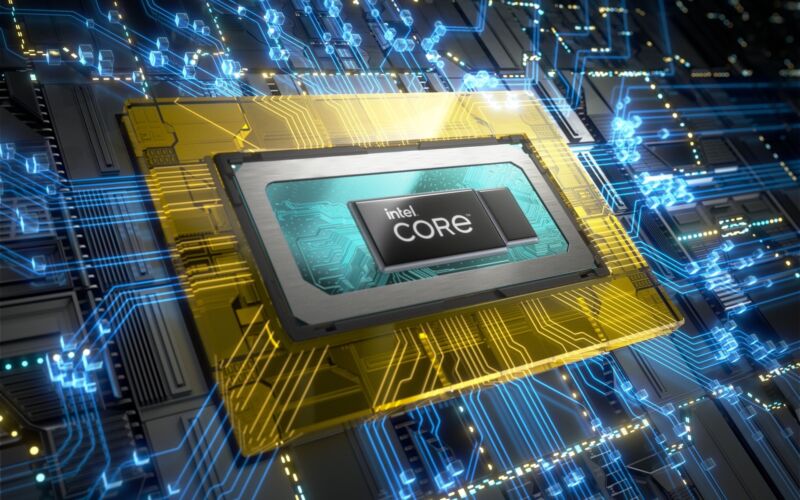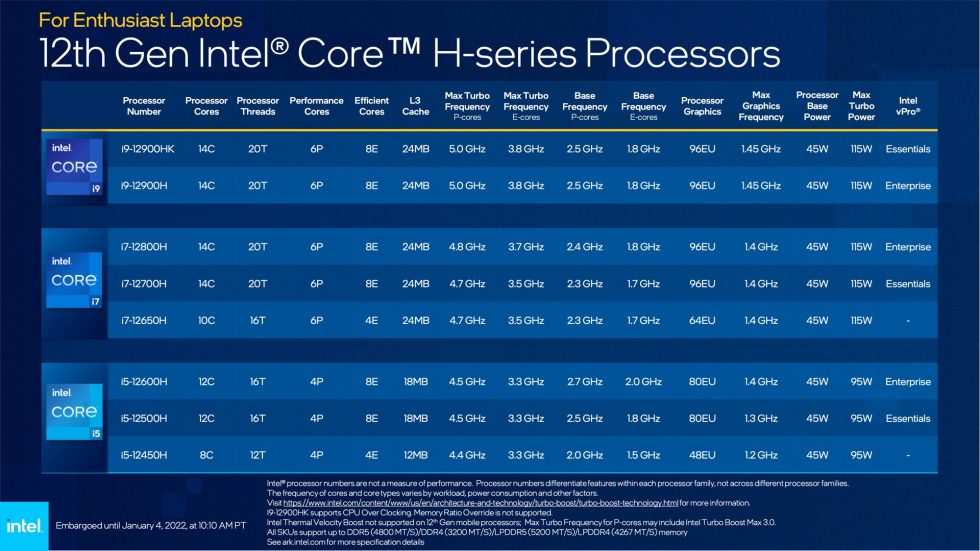
Enlarge / Intel's 12th-generation Core chips are coming to laptops soon. (credit: Intel)
In addition to announcing new desktop chips, Intel is also expanding its Alder Lake architecture to laptops. Intel has announced 12th-generation Core chips for everything from high-end gaming laptops to thin-and-light ultrabooks, with low-end Pentiums and Celerons thrown in for good measure.
These laptop chips use Intel's new hybrid processor architecture, which combines larger, faster performance cores with smaller, more efficient cores (P-cores and E-cores, respectively). How many P-cores and E-cores you get depends on the processor you're buying, and you'll need an operating system that supports Intel's "Thread Director" technology to get the most performance out of the chips. Windows 11 supports it now, Linux support is in the works, and Windows 10 doesn't have it and won't be getting it.
High-performance: H- and P-series CPUs
-

Intel's H-series laptop processor lineup. [credit: Intel ]
Intel's H-series processors are its top-performing laptop GPUs, and 12th-generation H-series chips will begin shipping in laptops starting in February. We've provided the tables with all of the core counts and clock speeds above, but to quickly summarize the differences between the eight different H-series CPUs:
No comments:
Post a Comment